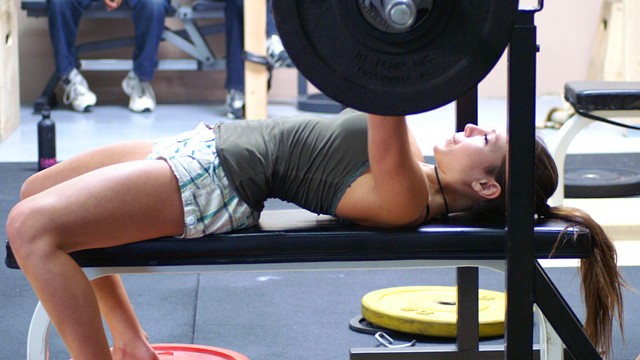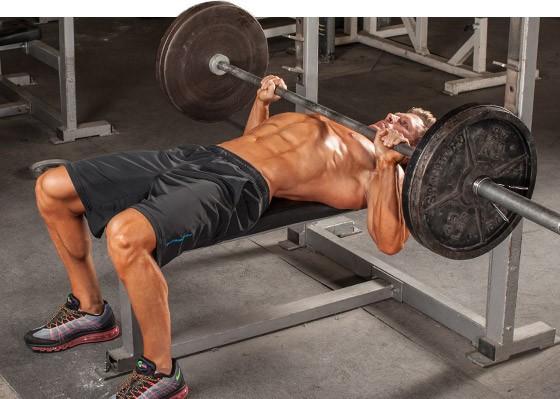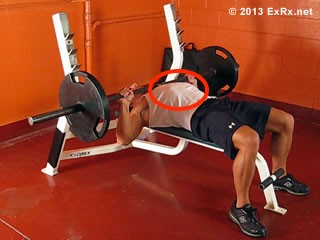
It’s that time of year again, where dudes everywhere want to improve their bench press. Actually, it’s always that time of year, every day.

(source: youtube.com)
In fact, it’s not just the dudes anymore. Women and men want to brag on their bench. If you’ve been lifting more than a couple of weeks, you know that improving your bench is tedious.
Squeaking out one more rep or adding five pounds to your max may take you all year to accomplish.
Essential reading: 5 hacks to Fix Your Broken Bench For Life
Like most things, we lose much in the details. While we tend to focus on bigger factors like flat versus incline bench, it may be the small details of your lift holding you back.
This is what competitive lifters do. They scrutinize every detail, hammering their technique until it’s as consistent as Christmas pudding. Then they tune it some more.
In this round of improving your lift, we’re gonna cover three key points: where you start, where you finish, and how you fortify your base of support with one little tweak.
Spot The Top

(source: active.com)
Where the bar ends matters. If you push it over your face, the bar is too high on your body, above your chest muscles. They’re still working, but so are your shoulders.
If the bar goes any higher, you could strain something. You’re wasting a ton of energy trying to stabilize a bar that should be straight above your nipples, no higher on your body than your shoulder joint.
On the flip side, if you bring that bar too low on your body, say above your lower rib cage, you’ll fatigue your triceps. You also won’t leverage the mechanics of your pec.
Instead, when you lift the bar from the rack, take a pause in the top position. Then spot where the bar is, by anchoring it visually to something on the ceiling, using your full field of view.
You’ll bring it back up to that same spot every rep. Don’t let it surprise you if hitting that spot is harder than you thought. You’ll need to reset this for every set as the bench and your exact position may shift.
Spot The Bottom

(source: bodybuilding.com)
Same as the top, dropping the bar to the wrong spot on your body will cause you to lose power.
At the risk of oversimplifying, there are two schools of thought. In one school, your elbows flare out, the bar lowering to point high on your body.
This is not my school. That is the destroy your shoulder school of lifting. If it’s your preference, knock yourself out.
In the school of proper bench press technique, you will keep your elbows closer to your body, not pinched tight, but close… maybe 30-45 degrees from your sides. The bar will lower all the way to your chest.
Where that spot is, depends on many factors like your arm and torso length. Spot it once with a blank bar before you lift, then come back to that spot every lift.
This spot shouldn’t shift between lifts. Get it right once at the start of every session, then hit it every set thereafter.
Close Your Rib Cage

(NOT THIS | source: exrx.net)
Most lifters know they have to create tension. They also know a little arch in the back is key to position the shoulder.
What they fail to understand is that the rib cage shouldn’t stick out like there’s an alien about to spring from the lifter’s belly.
The problem is that a rib cage poking out means your spine is hyperextending, possibly risking damage to your discs.The other problem is that you losing power and stabilization in your thoracic spine when your rib cage isn’t closed.
You’ll burn fuel trying to steady the left to right twisting of your torso, fuel you could focus on your push.

(source: eatandexercises.net)
Make those three adjustments for the next month to see if you can’t finally add that extra five pounds or hit that one-more-rep target.
There are obviously many moving parts to the bench press, so don’t get depressed if these aren’t the panacea you seek.
At the very least, you now have a consistent path of motion and a strong base from which you can build.
Onwards and upwards.